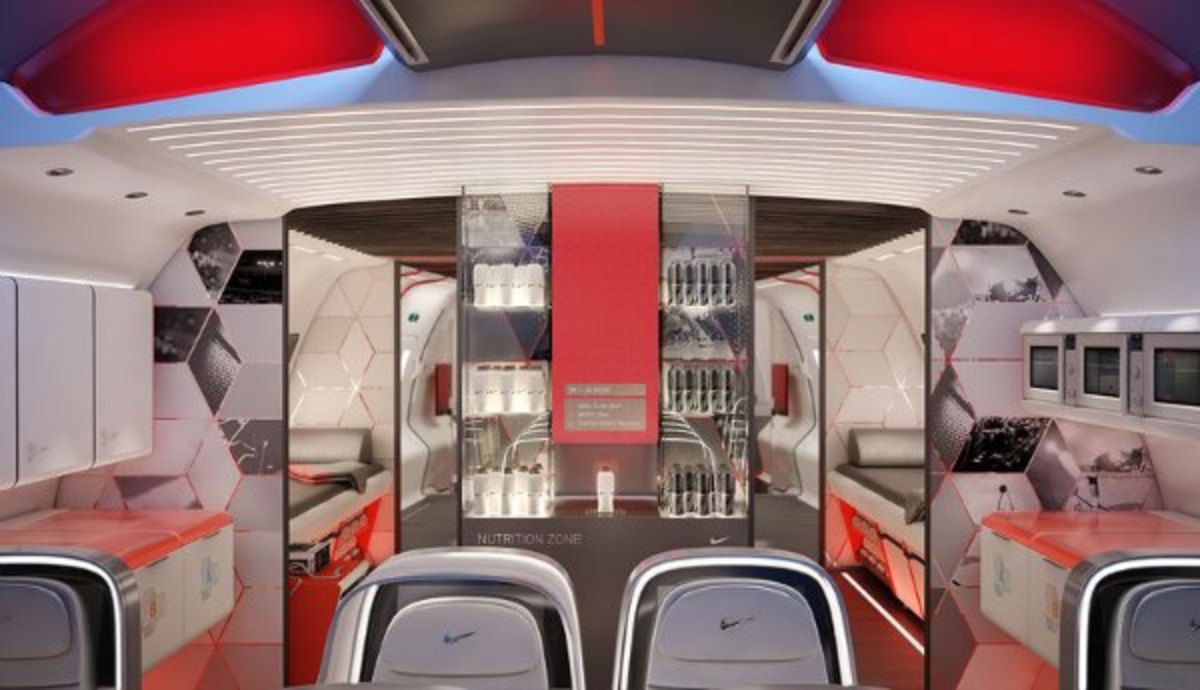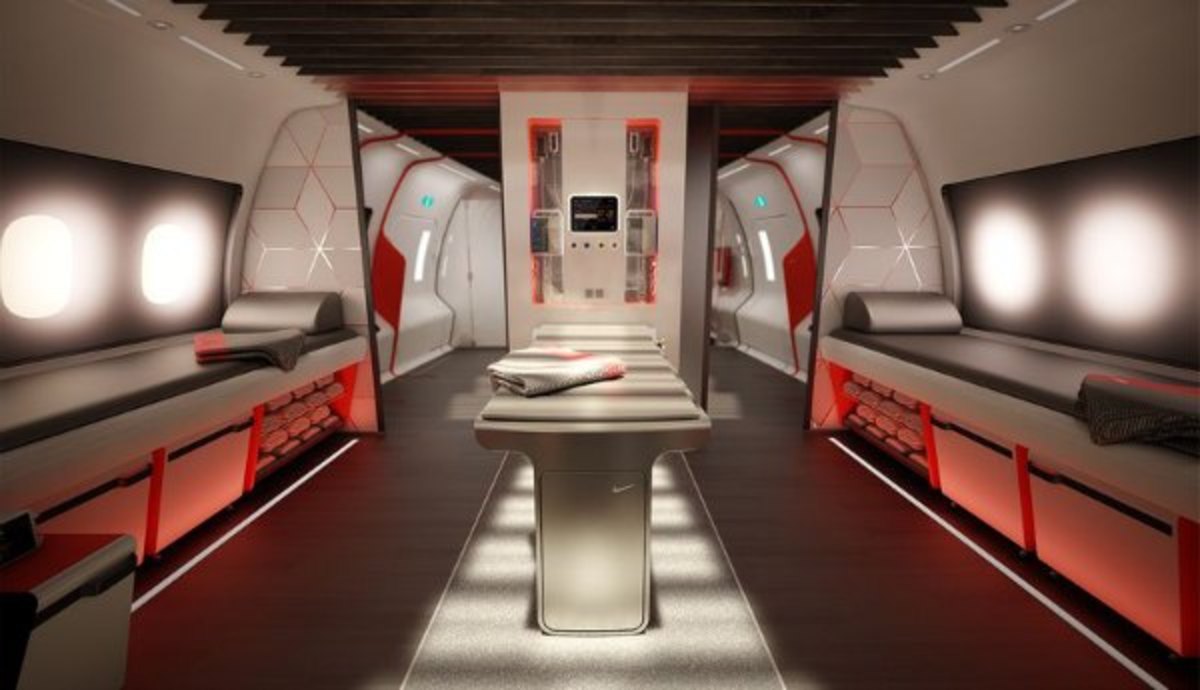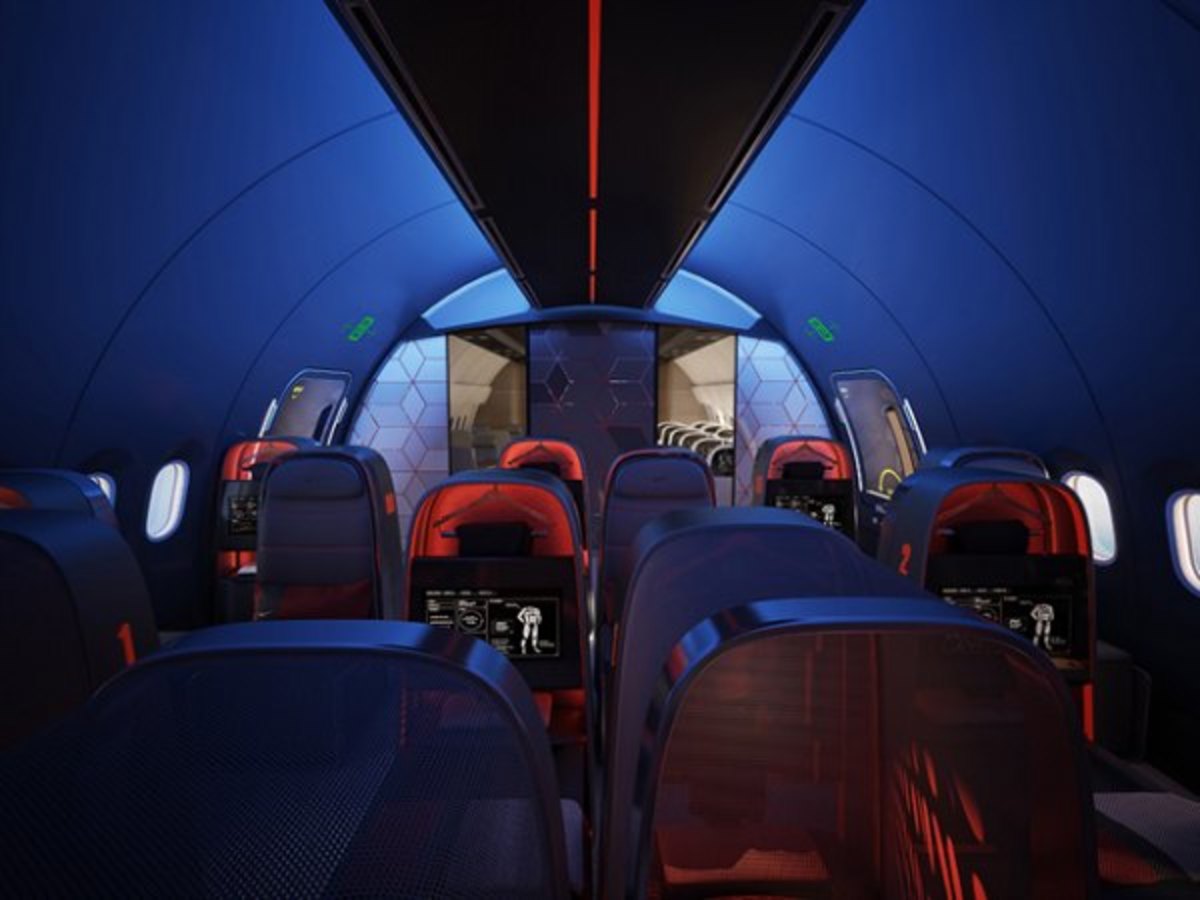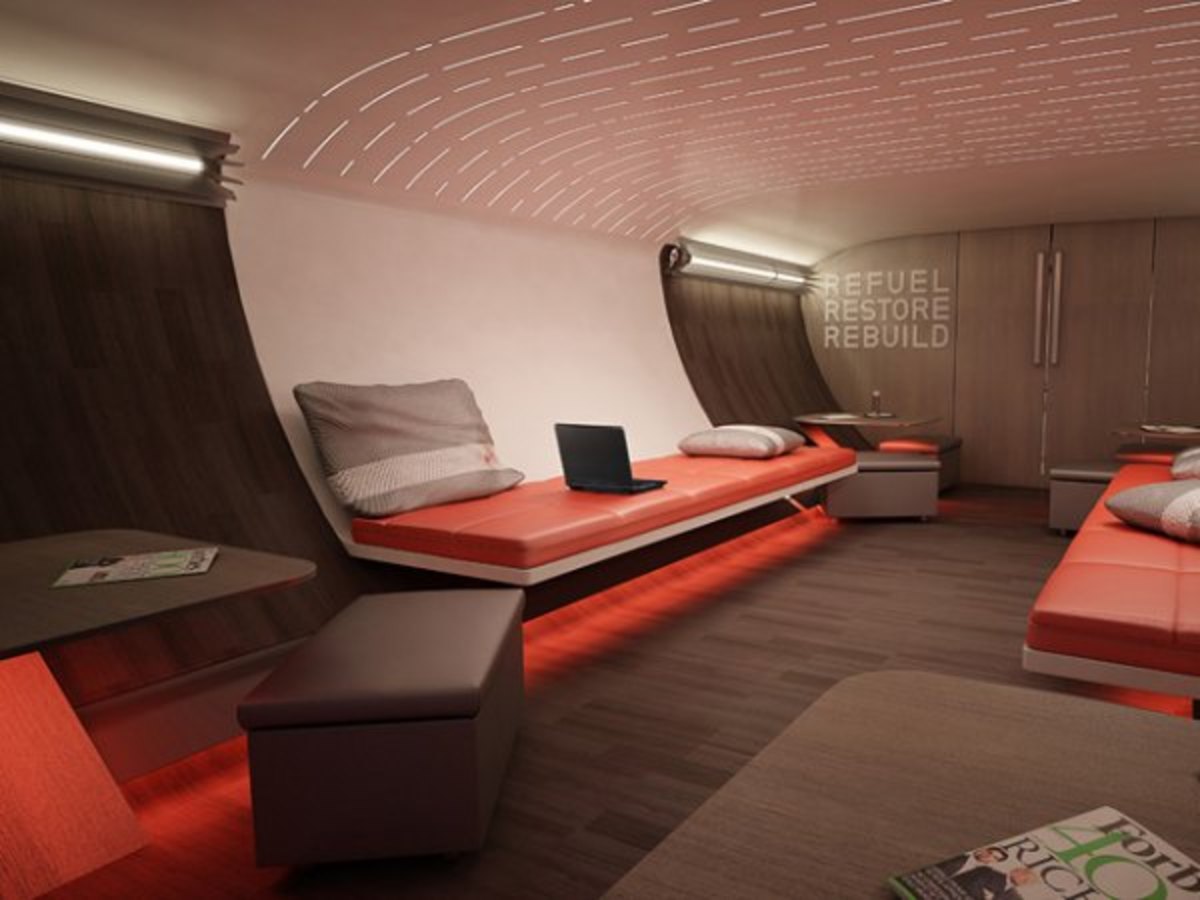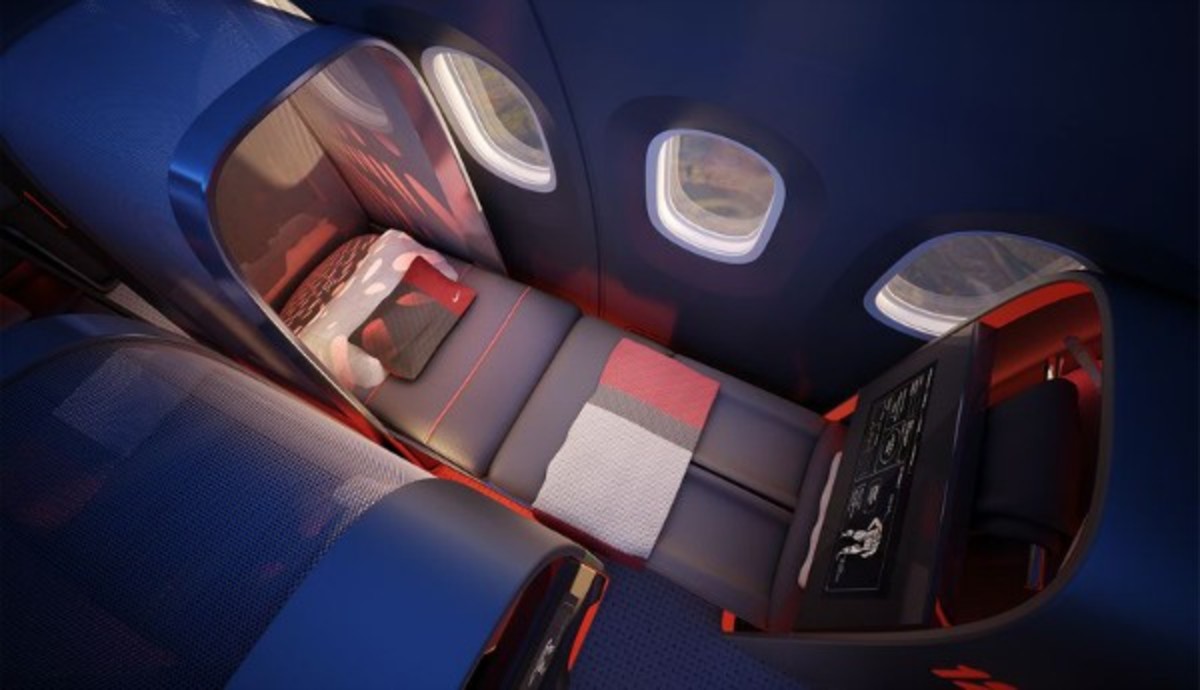Designing the ultimate pro athlete recovery center — in the air

In professional sports, every athlete that performs on the field also spends copious amounts of time traveling from stadium to stadium, city to city, fitting in the physical recovery part of their regimen wherever they can. Grabbing a bag of ice from a passing drink cart while crammed into an economy-sized seat aboard a normal plane doesn’t scream elite recovery.
Aviation design firm Teague has the answer.
The Seattle-based company teamed with Nike and a variety of experts, spending nearly four years researching the best way for athletes to recover at 40,000 feet. The product of their collaboration was the creation of the ultimate airborne experience, all designed to give teams recovering in the air the ultimate edge.
“Recovery was the cornerstone of this project,” Annaliese Chapa, Teague designer, tells Edge. “These athletes, yes, they are certainly getting paid a lot of money, but they are also sustaining fairly serious injuries on a regular basis. The overall health and well-being starts with recovery.”
Philipp Steiner, Teague creative director, tells Edge the best provisions made for professional teams, especially large teams such as NFL squads, in today’s travel world may include some extra seat width. “Under the best conditions it is comparable to business class,” Steiner says. “But nothing in further accommodations.”
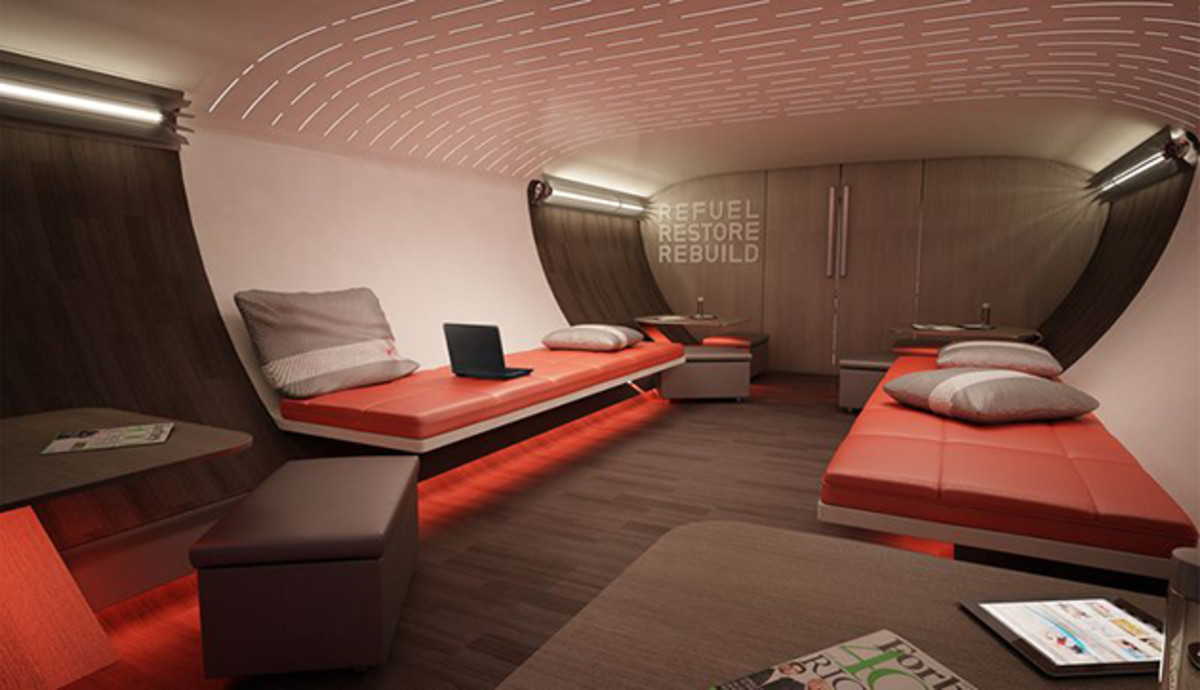
Smaller teams, such as in the NBA, often use private charter business planes, which may afford a bit more legroom, but most NFL teams simply charter regular aircraft from the bigger carriers. “The most we’ve heard of is they might be able to get you an ice bag from the ice in the drink cart,” Chapa says. “They might be able to plan the meal, but it is still the food provided to other passengers.”
That all goes away in Teague's design of aircrafts. With a group of aviation designers loving sports, they teamed with Nike to better understand the athlete’s recovery process and then zoned a plane to plan for that recovery. “We design for aviation and the question was brought up on how did travel impact athletes,” Steiner says. “Using extreme users to gain an understanding is a typical design process. Professional athletes are bigger, faster and get exposed to harder physical conditions than the rest of us.”
Studies show that motor function measurably deteriorated in athletes after air travel and lingered for roughly the same number of days as the number of time zones crossed. Teague says with all the money getting poured into home training centers and facilities, a team’s “away” facility—the plane—deserves some attention too.
Teague zoned the functions of the aircraft, not in a class system or by who showed up first, but by needs. Players, coaches and assisting staff all have differing zones, optimizing foot traffic and noise levels for the right people to connect for the right purposes, Steiner says.
Falcons GM Thomas Dimitroff: What drives the NFL's fittest exec?
And with recovery the pinnacle of the design, Teague worked in an area that resembles a locker room to accommodate for the needs of ground athletes while in the air.
Overall, Chapa says, the design includes the ability to assess recovery. Biometric monitoring urinals to gauge dehydration and biometric-monitoring apparel that downloads information at a players’ seat highlight the design.
“Trainers could monitor the feedback and start communicating and building a strategy for the duration of the flight,” she says. “For some, that might mean getting ice or a massage or they might spend time with the trainer in the recovery room.”
And while players who need IVs now often lay across seats, the recovery room includes at least one true medical table to handle more serious needs.
Teague learned from a researcher that sometimes the best recovery comes in the form of sleep. An athlete-sleeping zone, away from all foot traffic and noise, gives players time to rest.
Special spaces to encourage natural circulation—a key promoter of healing—and space for film study round out the design.
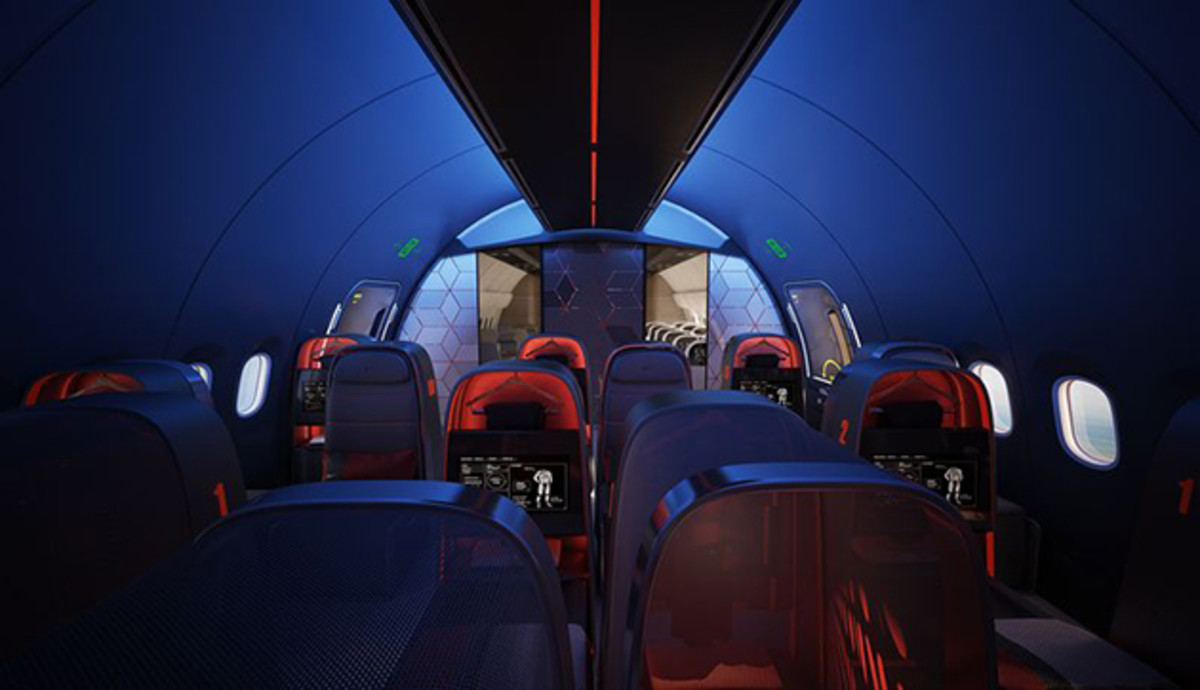
Teague created its prototype plan to accommodate 100 people, a typical NFL traveling contingent, to create a realistic scenario and accommodate for the needs of entire staffs. But, as Steiner says, research shows that NBA teams have the most cumulative negative travel impact over the course of the season, with so many flights longer than three hours—the point where the flight really starts to wear on a body—so close to games. “The more frequently they travel,” he says, “the more important the need to get the right treatment in the right conditions.”
The new design hasn’t made its way into a fuselage just yet, but Teague thinks owners or teams wanting an advantage will sign on. Chapa believes Mark Cuban’s Dallas Mavericks represent the only professional team using a team-owned plane (Paul Allen, owner of the Portland Trailblazers, sold his team plane). Steiner sees owners, such as Cuban, wanting to configure a personal aircraft with the new design for an advantage. He also envisions charter companies or airline carriers wanting to have at least one sport-specific plane to better service professional team clients.
“If there was a team that wanted to outfit a personal jet it could be fully customized to give them an advantage,” Steiner says.
To get the grandest edge from an “away” training facility, teams of the future will gladly ditch the bag of ice from the drink cart.
Tim Newcomb covers stadiums, design and gear for Sports Illustrated. Follow him on Twitter at @tdnewcomb.
Nike designed Airplane Cabin
